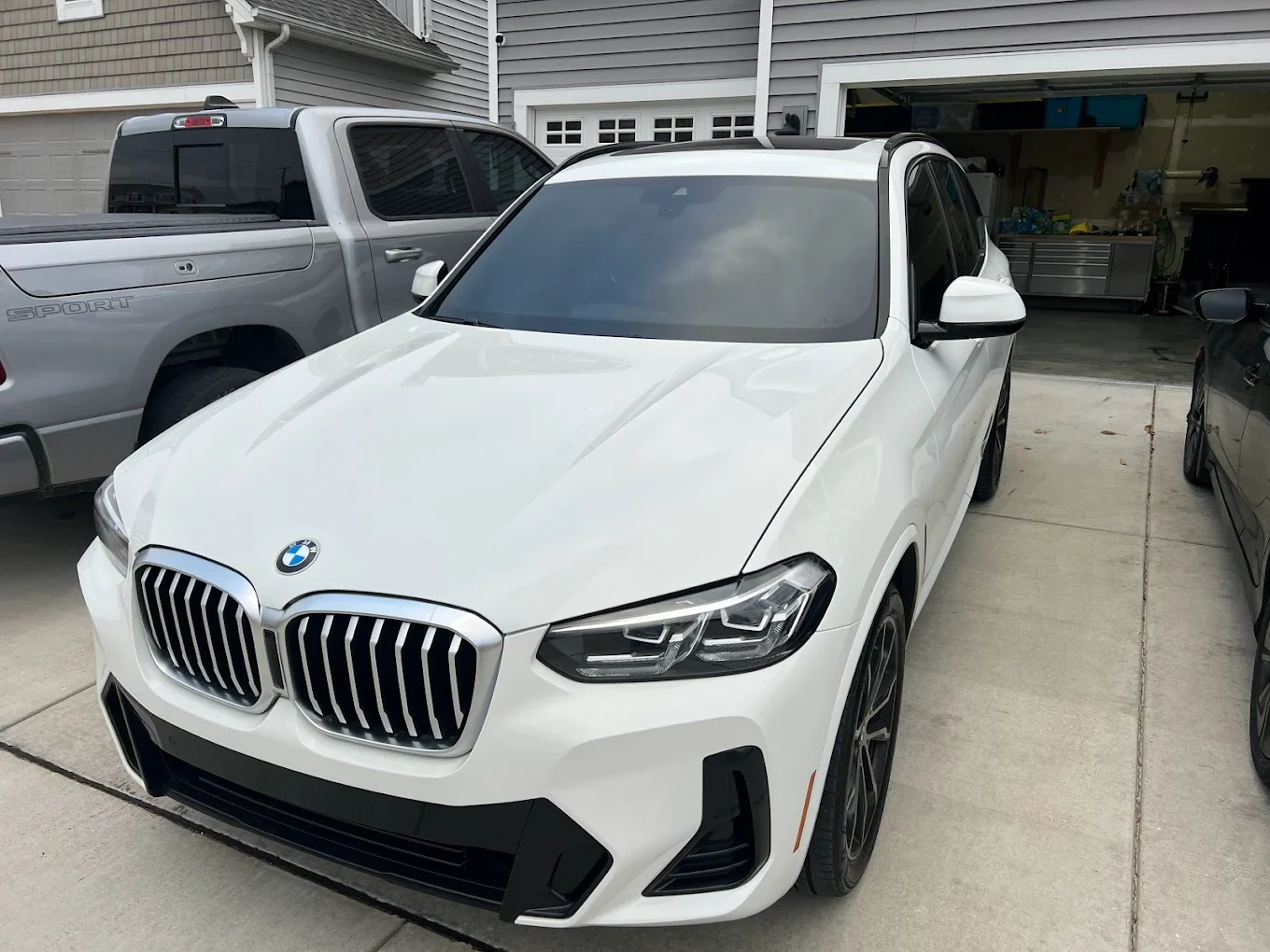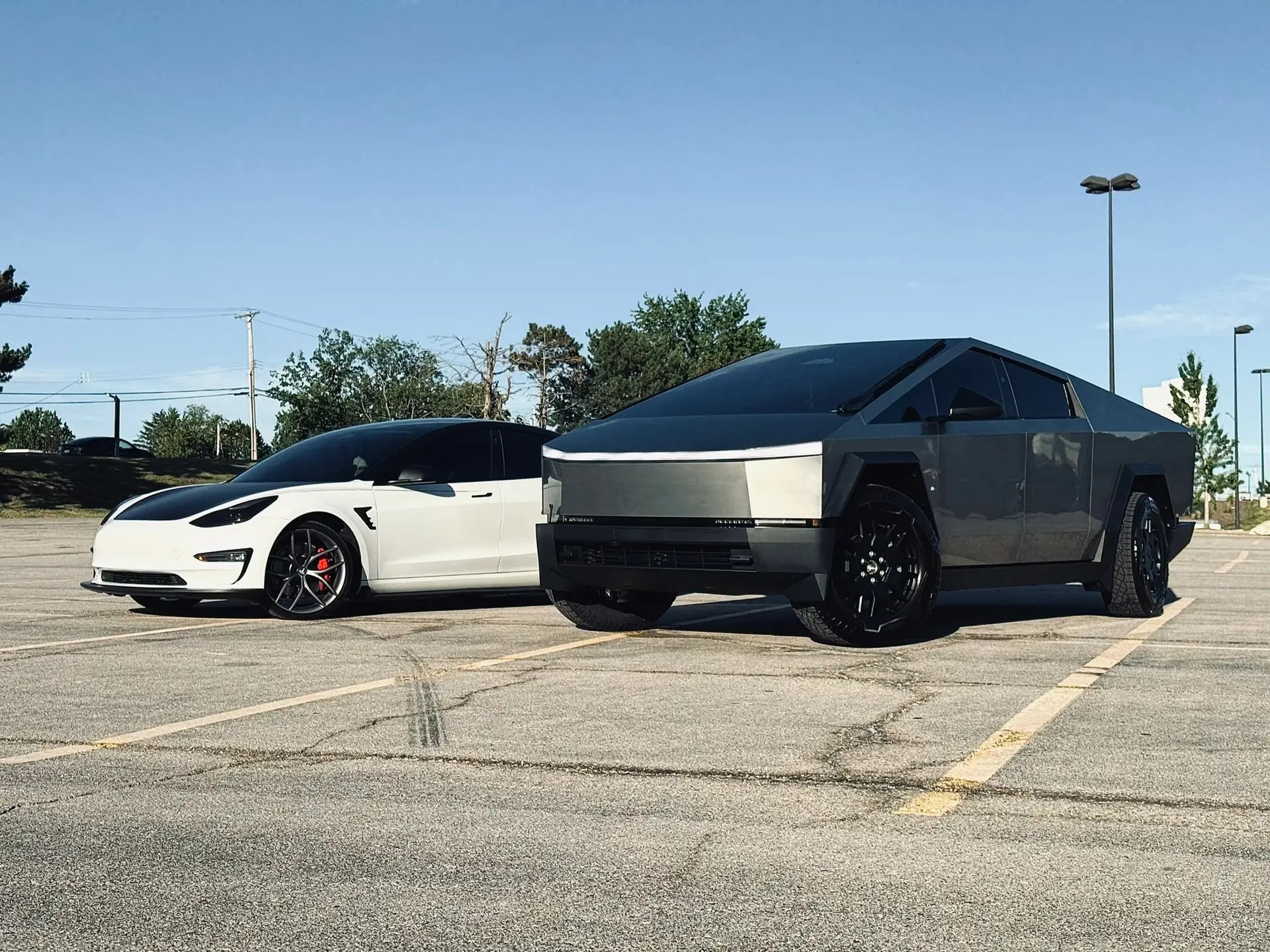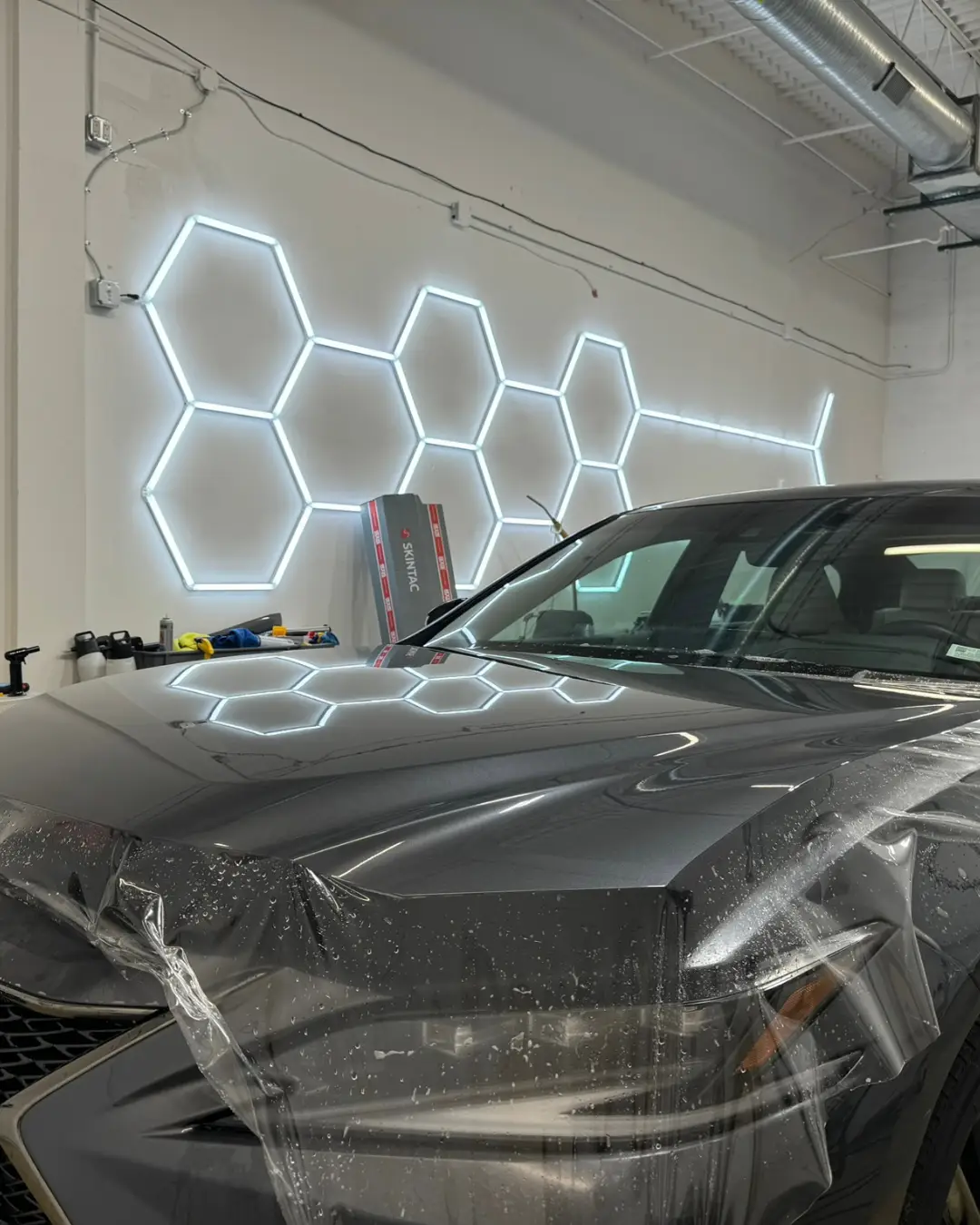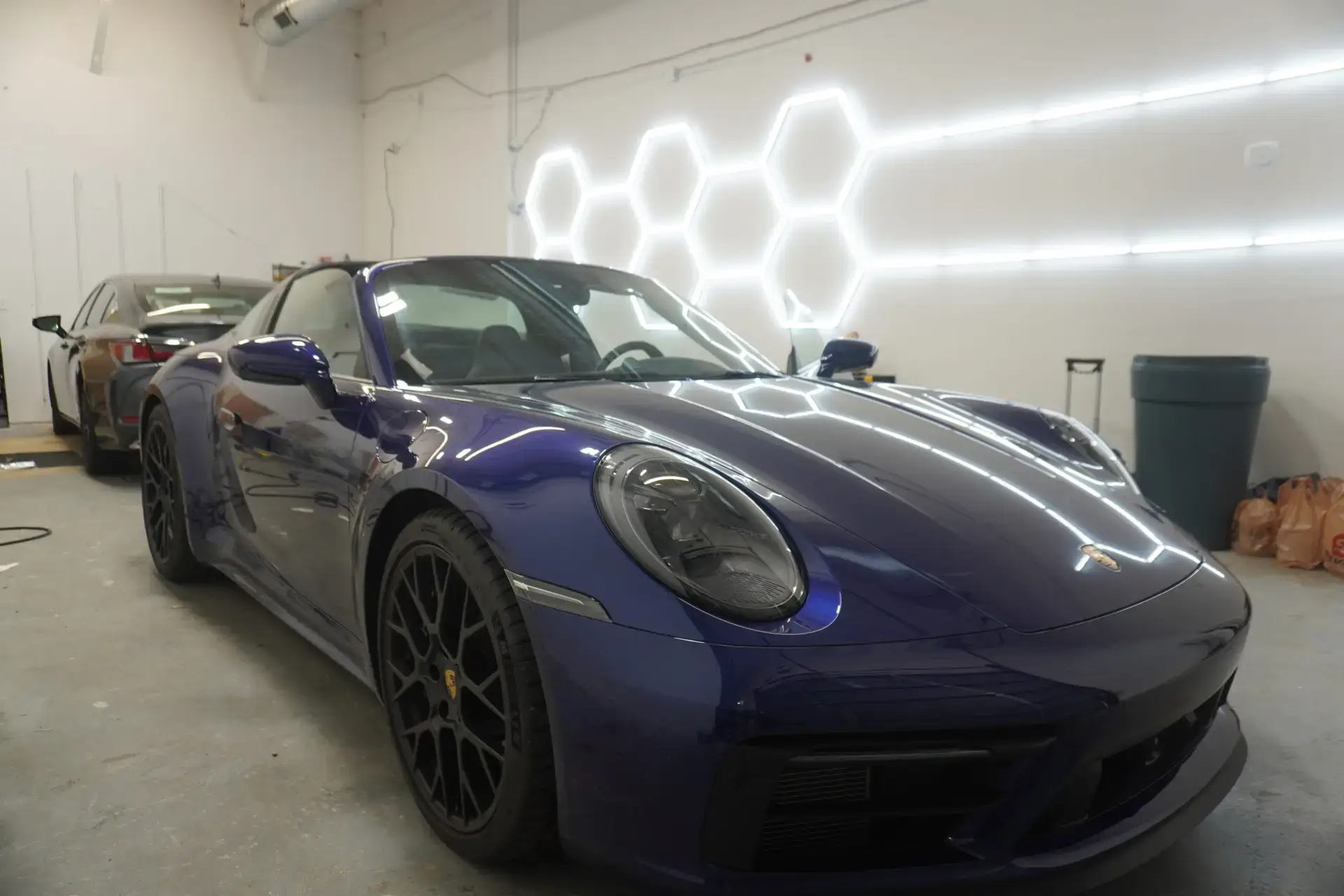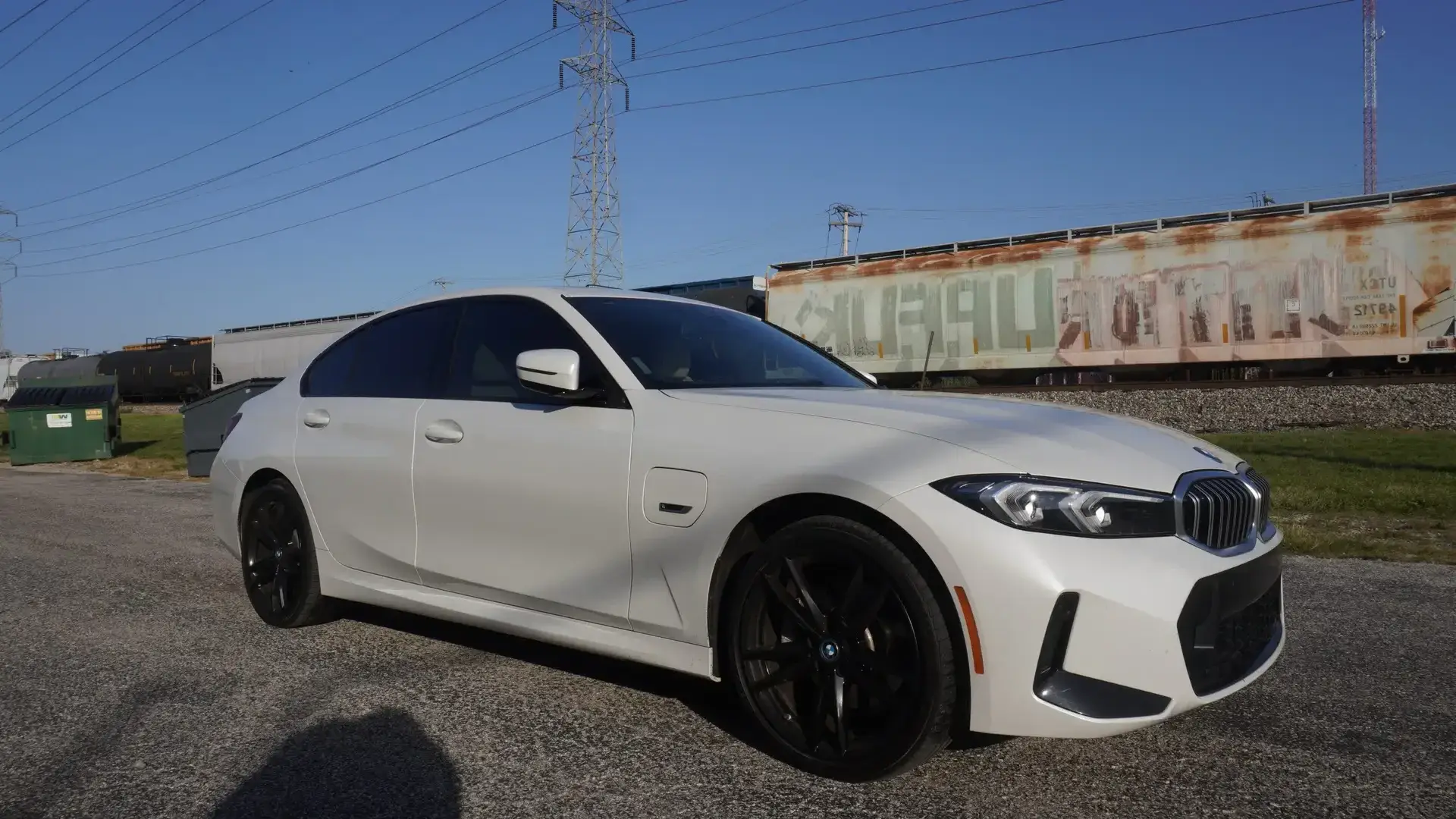St. Louis summers aren’t for the faint of heart. With high humidity, intense sunlight, and long stretches of scorching temperatures, your vehicle can feel like a rolling greenhouse if it isn’t properly protected. That’s where window tinting comes in. It’s more than just a sleek upgrade, it’s a smart defense against heat, UV rays, and uncomfortable drives.
At Express Window Tinting & Paint Protection, we knfow that selecting the best window tint shade can be a game-changer. In this guide, we’ll break down how tint shades work, why they matter in the Midwest, and how to choose the right one for beating the St. Louis heat.
Why Window Tinting Is Essential for St. Louis Summers
Window tinting makes your ride look cooler, but that’s only the beginning. The real value of window tinting lies in protection and performance.
- Reduces Interior Temperatures: Tint blocks solar energy, significantly lowering cabin temps on hot days.
- Blocks UV Rays: The sun’s rays can fade upholstery, crack dashboards, and damage skin. Quality films block up to 99% of UV.
- Improves Driving Comfort: Less glare means safer and more comfortable driving.
- Boosts Fuel Efficiency: A cooler cabin reduces A/C use, which helps fuel economy.
In a city like St. Louis, where summer highs frequently push past 90°F, these benefits aren’t luxuries, they’re essential.
Understanding Window Tint Shades and VLT
When we talk about “window tint shade,” we’re really talking about Visible Light Transmission (VLT). This is the percentage of visible light that passes through the window.
- 5% VLT: The darkest, often called “limo tint.” Maximum privacy and glare reduction.
- 20% VLT: A dark shade that balances privacy with outward visibility.
- 35% VLT: A factory-tint look. Good balance of style and function.
- 50% VLT: Light tint that still provides noticeable heat rejection.
- 70% VLT: Very light or nearly clear. Often used on windshields for UV protection without changing appearance.
The lower the percentage, the darker the tint and typically, the better it blocks heat and glare.

The Science Behind VLT and Heat Rejection
VLT measures light, but heat rejection depends on the film’s material. Ceramic and carbon-based films outperform standard dyed tint because they block infrared (IR) radiation, the main source of heat buildup. A lighter ceramic tint (like 50%) can outperform a darker dyed tint (20%) in temperature reduction.
This means you can enjoy superior heat protection without overly dark windows,perfect for drivers who prioritize both visibility and comfort.
Missouri Window Tint Laws: What You Can and Can’t Use
It’s not just about your style; it’s about staying compliant with Missouri window tinting laws.
- Front Side Windows: Must allow more than 35% of light in
- Back Side Windows: Any darkness allowed
- Rear Window: Any darkness allowed
Reflective tint is also regulated, so always work with certified professionals like Express Window Tinting & Paint Protection who stay current on state law.
Best Window Tint Shades for Summer Heat in St. Louis
Let’s break down the best options for keeping your car cool, functional, and stylish this summer:
1. Ceramic Tint (35% or 20% VLT)
- Heat Rejection: Excellent
- UV Protection: Up to 99%
- Best For: Drivers who want maximum performance with a moderate-to-dark shade
Ceramic tint uses nano-ceramic particles to block infrared heat without interfering with electronics. It’s the best option for true heat control.
2. Carbon Tint (35% VLT)
- Heat Rejection: Good
- UV Protection: High
- Best For: A stylish look with solid solar performance
Carbon tint gives a matte-black look while resisting fading. It’s a great middle-ground for appearance and protection.
3. Dyed Tint (50% VLT)
- Heat Rejection: Moderate
- UV Protection: Standard
- Best For: Budget-conscious drivers who still want better comfort
This entry-level option offers basic glare reduction and a touch of heat control.
How Tint Shades Affect Driving Visibility
Lower VLT = Darker Tint = Less Light Inside. That can be a blessing or a curse depending on the time of day. While 20% or 5% VLT can drastically reduce glare and cabin heat, it may impact visibility at night.
Daytime Driving:
- More comfortable with darker shades
- Easier on the eyes in bright sun
Nighttime Driving:
- Medium tint (35%+) are better for safe visibility
- Avoid ultra-dark tint unless it’s on rear or side windows only
Matching Tint Shade to Your Vehicle Use
Different drivers need different tint strengths depending on their daily routines.
- Commuters: 35% ceramic for comfort and compliance
- Families: 20% rear window tint for child/passenger comfort
- Ride-share/Delivery: 35% or 50% to protect valuables without limiting visibility
- Show Cars: 5% limo tint on rear windows for bold style
Don’t Forget the Windshield
While many assume windshields can’t be tinted, Missouri allows a 70% VLT strip on the top portion (AS-1 line). This reduces overhead glare and improves driving comfort without darkening the full windshield.
Reflective, Ceramic, or Dyed? Choose the Right Tint Material
The material of the film affects more than just shade. Here’s a quick breakdown:
- Ceramic Tint: Blocks IR heat and UV, best clarity, no signal interference
- Carbon Tint: Matte look, durable, good performance
- Dyed Tint: Budget-friendly, decent aesthetics, less durable
At Express Window Tinting & Paint Protection, we help you match the right material and VLT for your lifestyle and legal needs.
How Long Will Your Tint Last?
Lifespan depends on tint quality and care:
- Dyed Tint: 2–3 years before fading.
- Carbon Tint: 5–7 years, with minimal fading.
- Ceramic Tint: Up to 10 years with proper care.
Maintenance tips:
- Wait 3–5 days before rolling windows down.
- Clean with ammonia-free products.
- Use soft microfiber cloths to prevent scratches.
How Tint Helps Preserve Your Interior
St. Louis heat and sun can do serious damage to your car’s interior:
- Fades leather and fabric
- Cracks dashboards and trim
- Overheats electronics
Choosing the right window tint shade helps extend the life of your seats, dash, and in-car tech. Think of it as sunscreen for your car.
Final Thoughts
The best window tint shades for summer in St. Louis are those that balance heat rejection, visibility, and legal compliance. Whether you’re stuck in downtown traffic or cruising on I-64, a professionally installed tint keeps your car cooler, protects your interior, and makes every drive more enjoyable.
At Express Window Tinting & Paint Protection, we offer custom recommendations, top-grade ceramic and carbon films, and flawless installations. Ready to beat the St. Louis heat? Book your appointment with the experts today.
FAQs: Window Tinting for St. Louis Summers
What tint is best for heat reduction in St. Louis?
Ceramic tint with a VLT of 35% or 20% offers the best heat rejection while staying street-legal in Missouri.
Will tinting make my car too dark at night?
If you’re worried about night visibility, stick with 35% or lighter on front windows and reserve darker shades for rear.
Is window tinting legal on all windows in Missouri?
Yes, but front windows must let in more than 35% of light. Rear and back-side windows can be darker.
How long does tint last?
Professional films like ceramic or carbon can last 5-10 years or more with proper care.
Can I tint my windshield in Missouri?
You can tint a narrow strip (above the AS-1 line) with up to 70% VLT. Full windshield tinting is not allowed.


